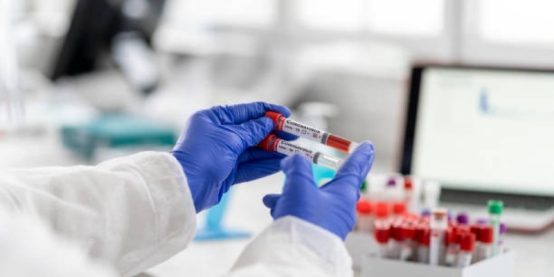Innovative HIV Treatments In 2025: What’s New?
By 2025, HIV treatment is expected to have made significant strides forward. One of the most important changes is the use of long-acting injectable drugs. These are not new, but they've improved. Before now, many people living with HIV had to take pills every day. That can be tiring, stressful, and easy to forget. Now, some treatments allow patients to get an injection only once a month or even once every two months. This helps reduce the daily reminder of the virus.
Long-Acting HIV Treatments: Easier Options for Better Results
Long-acting options like cabotegravir and rilpivirine are now more available. The monthly shot is as effective as daily oral medicine for many people. Scientists are also working on new formulas that could be given every three or six months. These treatments do not cure HIV, but they make it easier to live an everyday life.

New Pills With Fewer Side Effects
Traditional HIV medications can cause stomach issues, headaches, and fatigue. In 2025, drug makers have made changes. New combinations of drugs are now smaller, easier to digest, and cause fewer side effects. Medicines such as bictegravir/emtricitabine/tenofovir alafenamide (often administered as a single pill once daily) are known for being both effective and safe.
These new pills are beneficial for children, older adults, and people with other health problems. They help protect the liver, kidneys, and bones better than some older medicines. Patients now have more choices based on their health, lifestyle, and what works best for their bodies.
A study shared by the NIH noted that newer single-tablet regimens help people achieve undetectable viral levels more quickly. When a person's virus level is undetectable, it means they can't pass the virus to others through sex.
Therapies That Target the Virus More Directly
Scientists have made discoveries about how HIV hides inside the body. This hiding process, called "viral latency," is a reason why HIV cannot be cured yet. However, researchers are now developing broadly neutralising antibodies (bNAbs). These are laboratory-made antibodies that target multiple forms of HIV.
bNAbs are used in conjunction with other medications. The goal is to help the immune system identify and combat the virus in hard-to-reach areas. In 2025, some patients are part of trials that combine bNAbs with regular treatment. This approach is still being tested, but the results are looking promising.
These therapies also hold promise for future vaccines and potential cures. A group of researchers from Johns Hopkins Medicine explained that using bNAbs helps limit the virus's ability to grow in the body. This method could eventually reduce the need for lifelong treatment.
Gene Editing Research Is Moving Forward
In laboratories around the world, scientists are developing gene-editing tools, such as CRISPR, to combat HIV. These tools can cut parts of the virus's genetic code inside human cells. In 2025, an increasing number of early-stage clinical trials will be underway. These trials aim to remove the virus from areas in the body that medicine usually can't reach.

Gene therapy is not yet ready for everyday use. It's expensive, complex, and still being studied. But progress is being made. For example, a few patients have shown no trace of HIV for months after treatment. These cases give researchers more confidence to continue.
Medical experts hope that in the next 5 to 10 years, gene editing may enable some people to discontinue medication altogether. However, safety remains a top concern. Many checks must be done to avoid harmful changes to the body's cells.
HIV Prevention is Getting Smarter
New treatments are not just for those living with HIV. Prevention has also improved in 2025. One example is Apretude, a long-acting injectable form of PrEP (pre-exposure prophylaxis). It is taken every two months and lowers the risk of getting HIV from sex.
Apretude is especially helpful for people who struggle to take a daily pill. It is now available in many countries, and more people are learning about it through doctors and health centres. PrEP is essential in reducing the spread of HIV, especially in high-risk groups.
Wearable health devices also help in HIV prevention. Some tools can track the levels of medicine in the body. This allows doctors to know if someone is staying protected. These devices are used in trials to see how technology can improve health outcomes.
More Care for the Whole Person
In 2025, doctors will treat HIV not just with medicine but by looking at the whole picture. Mental health, housing, food, and community support are included in care plans. Clinics offer a range of services in one location. This makes it easier for patients to manage all their needs.
Telehealth is also more common. Patients can consult with doctors online, access test results, and order medication refills from the comfort of their own homes. This helps people in remote areas and those with busy schedules. Many health workers say this approach helps patients stay on treatment longer.

Access and Price Still a Challenge
Even with all these new tools, not everyone can access them. Some of the latest treatments are costly or only available in big cities. People in rural areas or poorer countries may still rely on older, harder-to-manage medicines. Groups like UNAIDS are working to make sure new drugs reach more people.
Lower prices, more generic options, and donations from pharmaceutical companies help make treatment more accessible and fair for everyone. More work is still needed. Stronger healthcare systems and more innovative policies can help more people get the care they deserve.
Hope and Realism in HIV Progress
The progress in HIV treatment by 2025 demonstrates the significant advancements made in the field of science. Long-acting injections, better pills, and advanced research give people living with HIV more control over their health. However, no medicine has yet completely eradicated the virus. That is still the big goal.
There is hope, but patience is also needed. Many of these new treatments are still being studied. They may take longer to become available to everyone. Until then, sticking to current therapies, talking with doctors, and using prevention tools are the best steps.
Living with HIV today is not the same as it was years ago. Thanks to science and human effort, people with HIV can now live longer, healthier, and more fulfilling lives.